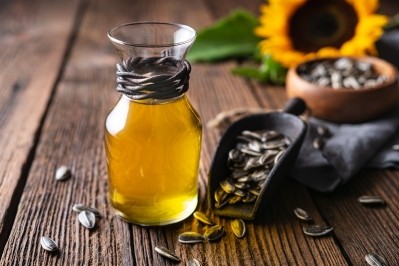‘The main issue is affordability’: How is Ukraine war affecting meat production and consumption in Russia?

Earlier this week, FoodNavigator looked at how Russia’s invasion of Ukraine is impacting meat production, consumption, and exports around the globe.
Now, we focus on Russia’s meat sector: how is the war impacting meat production and consumption on home soil?
A changing situation
Russia produces a significant amount of meat per year. In 2020, the country produced an estimated 11,235kt, with poultry accounting for the highest production volume, according to Statista. Approximately 5m metric tons were reported that year.
Pork production too is significant, with 2020 figures suggesting volumes neared 4.3m metric tons.
Russia mostly imports beef and exports pork, with almost no pre-war trade conducted with European countries.
Pre-war meat consumption appeared to be increasing. According to 2019 data from the Russian Statistical Office (Rosstat) in Moscow, average meat consumption increased by one kilogram to 76kg per capital compared to 2019.
Following Russia’s invasion of Ukraine on 24 February 2022, this situation started to change. The knock-on effects on Russia’s meat industry, according to consultancy and market research firm Gira, will be significant.
While a little less ‘acute’ than the impact on Ukraine’s meat sector, the war will have a ‘negative impact’ on consumption, explained Rupert Claxton, Gira Meat Director, during a webinar on 24 March.
Negative impact on consumption ‘cushioned’
The consultancy does not expect per capita consumption will drop as steeply as in Ukraine. This is because with Russian’s spending more time at home, they are likely to spend more on food products for consumption in the home.
Other ‘cushioning’ factors include that Russia is only a modest importer of meat. Russian puppet-state Belarus is one of its main suppliers, as is Brazil – due to its low prices.
Given the devaluation of the Russian Ruble (today, 1 Russian Ruble buys $0.012, compared to $0.135 last year), Gira expects it will be ‘very difficult’ for Russia to import ‘any meat at all’ in the year ahead.
Some similarities may be seen between the current situation in Russia and the country’s COVID-19 restrictions. During the height of the pandemic, Russian consumers were largely ‘stuck’ in Russia and bought more local food, said Claxton. “Many of them were happy to buy Russian product, spending their money in Russia and supporting [domestic] consumption.”
As previously suggested, meat trade was almost non-existent with Europe or the US prior to the war, which can be interpreted as another ‘cushioning’ effect. Until the beginning of 2022, Russia was sending 41% of its poultry exports to China and 15% to Kazakhstan. Claxton believes Russia will continue to trade with these countries, but that there will be a ‘push’ to hold onto some of its domestic market.
Thirty-four percent of its pork exports were going to Vietnam, 20% to Kazakhstan, and 19% to the Ukraine last year. “It’s pretty unlikely they’ll be sending pork to the Ukraine [this year], although they will be sending some to their troops in Russian occupied territory…” said the industry expert.
The ‘double whammy’
The main issue for Russia’s meat industry is affordability. The sector will experience a ‘double whammy’, explained Claxton, of rising production costs and many poorer consumers with falling incomes.
Supply chains are facing ‘significant issues’. Not only are input costs on the rise (from feed to fuel and energy), but the major machinery manufacturers in Europe and the US, who supply equipment into Russia, are now refusing to do so.
“That means that [the Russians’] machinery won’t run, so they’ll have to come up with ways of sourcing spare parts,” said Gira’s Meat Director.
Where Russians are able to purchase spare parts from abroad, the cost will be higher due to the Ruble’s devaluation.
The other side of the ‘whammy’ lies in marketing challenges. Increased production costs will be difficult to pass onto the consumer, and as mentioned, the majority of meat production will be sold in Rubles for domestic consumption.
Again, given the Rubles’ devaluation, it is likely Russia will be priced out of the import market, which means greater focus on domestic production. Claxton also noted that Russia will have export access to China, who it sends poultry and beef to: “Russia continues to export beef and chicken paws to China.”
Russia also has trade ties with Vietnam, to whom it sells pork.
More on how the war in Ukraine is impacting meat production, consumption, and global exports, can be found here.






























